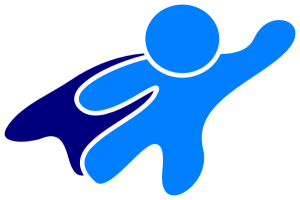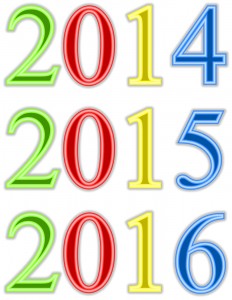 As teacher librarians we eat, live, breathe inquiry. Inquiry is our bread and butter, and accessing, evaluating, and producing information has been at the core of our teaching and learning. We teach strategies and skills for lifelong inquiry, not just to answer questions on a test. So, how do we use what we know about research and inquiry to solve the issues/dilemmas that we encounter in our professional library lives? How can we enhance our pedagogy and educational goals using inquiry skills? How can we crowd source our collective knowledge to identify and find solutions to challenges in the field, either locally or globally? How can we adapt action research and design thinking to solve problems?
As teacher librarians we eat, live, breathe inquiry. Inquiry is our bread and butter, and accessing, evaluating, and producing information has been at the core of our teaching and learning. We teach strategies and skills for lifelong inquiry, not just to answer questions on a test. So, how do we use what we know about research and inquiry to solve the issues/dilemmas that we encounter in our professional library lives? How can we enhance our pedagogy and educational goals using inquiry skills? How can we crowd source our collective knowledge to identify and find solutions to challenges in the field, either locally or globally? How can we adapt action research and design thinking to solve problems?
How can we incorporate surveys into this process?
Surveys are excellent tools to gather evidence for inquiry and professional practice in educational communities. They are also prevalent in our everyday lives, too. You probably are asked to participate in many marketing and interest surveys, but find them bothersome and annoying. A teacher librarian can develop and use surveys in multiple ways-with students, colleagues, administrators, parents, community members, and so on. So, when we develop surveys for students or colleagues, it is important to design and target the survey to a specific topic, and to make it succinct and relevant to avoid the annoyance factor!
Surveys are instruments that can be used with many audiences, and a well designed survey can provide information that can be mined for factual and anecdotal data. It takes time and practice to develop a tool that will be both simple and complex that can tease out responses that will reveal insights into a topic of inquiry. Surveys are easy to create online and when the participants respond, the results are displayed instantly in several visual formats. Surveys can be informal or formal, detailed, or open ended for engagement and commentary. They can be incorporated into academic research, or used as sounding boards for ideas within action research and design thinking. They can be used for pre-assessment for instruction, so that the instruction can be tailored and targeted to individuals. They can be used as part of an evaluation and reflection process, too, or as an end assessment. Altogether, feedback from surveys can help guide your practice as an instructional leader, co-teacher, administrator, and collaborator.
Tips for designing surveys for newbies:
Try out a free online survey service. Look for features that are available that you might want to have as results. Look at the format for developing the survey. There may be templates and sample questions to follow. An important feature is to have a visual representation of the data-usually in a chart or breakdown of percentages, or spreadsheet displays. Some platforms charge a fee for bells and whistles. Stick with a free one, until you perfect your techniques, and then decide if you want to upgrade, or find a new venue.
Suggested programs:
- SurveyMonkey https://www.surveymonkey.com/
- KwikSurveys https://kwiksurveys.com/
- Google Forms http://www.google.com/forms/about/
Keep it simple:
- Decide on a focus and audience for your survey. What is the purpose? You will want to share this with your participants, so that they will see that it matters, and will want to respond!
- Brainstorm the key essential ideas for feedback. What outcomes are you looking for? How will you word your questions so that they are clear and concise?
- Keep your survey to under ten questions! That is a challenge for many who want lots of detail.
- Your first question should give you demographic information about the participants, and contact information so that you can follow up with them, if needed.
- Draft your remaining questions using several different choices that will present the key ideas you want to ask about. You could use a multiple choice questions with “one” preference, or multiple choices with “more than one” preference. You can allow for comments for those who want to add additional information.
- The last question should be open ended to allow for other ideas that you did not anticipate.
Here are a few ideas for effective use of surveys:
In the past few years, I have come to depend on surveys to inform my teaching and professional practice. Some of the surveys have been internal, while others have been an integral part of research and the basis for reports or publication. I really want to know what my students and colleagues are thinking, and I appreciate the time and effort that a person puts into my inquiry.
Blended Learning and Online Instruction;
At the beginning of the semester, I send out a pre-course survey to students to ask about their comfort with technology and to evaluate their skill levels with certain platforms and applications that will be used during the course. I also ask about their familiarity with topics that are covered in the syllabus. I can then see who might need extra assistance and who else might be an “expert” to assist others. I can adjust some assignments and projects. A final reflection asks them to identify key learning events or challenges, and suggestions for course improvement.
Program Evaluation:
Periodically, a survey is conducted to get feedback on the delivery model and content for the school library media sequence of courses at the University of Vermont. The feedback is instrumental at looking at changes that will improve the delivery of the program, as we move forward and provide theoretical and practical practice for the 21st Century.
The most recent surveys were analyzed by Linda Brew and Judith Kaplan (2012) in “ A Program-based Approach to Developing and Implementing Blended Instruction: The University of Vermont School Library Media Studies Sequence.”
A new survey will be completed in 2016.
Professional organizations:
The Vermont School Library Association has been focused on advocacy within the state. As a research challenge, the professional concerns committee has been conducting surveys within the membership to determine the “state of school libraries” in 2014 and 2015. Last year the committee conducted a survey that targeted job descriptions and evaluations of teacher librarians (library media specialists), and this year the survey addressed staffing and budgeting issues. In 2015, we added a new incentive to participants-a lottery for a $100 gift certificate for library books. Over 57% of our members participated! We have reported out the results and implications of the surveys at our annual conference in May. We are using the survey results as an organization, to look at trends and at establish goals for advocacy statewide.
Do you use surveys in your practice? Let us know what you recommend!
References:
Brew, Linda and Judith Kaplan. (2012) “A Program-based Approach to Developing and Implementing Blended Instruction: The University of Vermont School Library Media Studies Sequence.” Chapter 9 in Blended Learning Environments for Adults: Evaluations and Frameworks, by Panagiotes Anastasiades, Hershey, PA: Information Science Reference, 2012. N. pag. Print
Image:
Collection of Judith Kaplan









